Travelers 2011 Annual Report Download - page 27
Download and view the complete annual report
Please find page 27 of the 2011 Travelers annual report below. You can navigate through the pages in the report by either clicking on the pages listed below, or by using the keyword search tool below to find specific information within the annual report.-
 1
1 -
 2
2 -
 3
3 -
 4
4 -
 5
5 -
 6
6 -
 7
7 -
 8
8 -
 9
9 -
 10
10 -
 11
11 -
 12
12 -
 13
13 -
 14
14 -
 15
15 -
 16
16 -
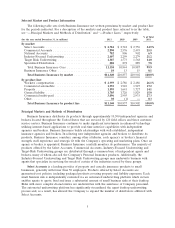 17
17 -
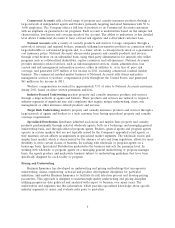 18
18 -
 19
19 -
 20
20 -
 21
21 -
 22
22 -
 23
23 -
 24
24 -
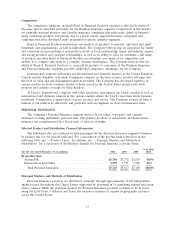 25
25 -
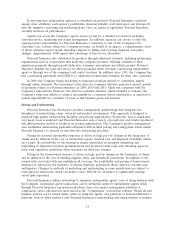 26
26 -
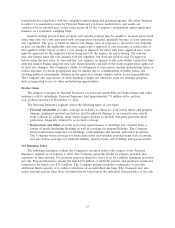 27
27 -
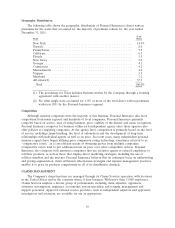 28
28 -
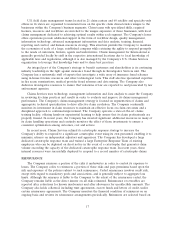 29
29 -
 30
30 -
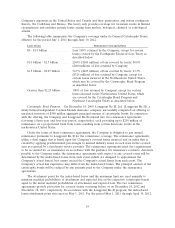 31
31 -
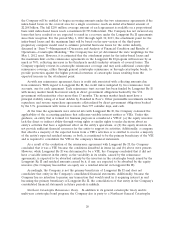 32
32 -
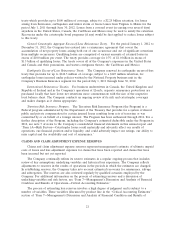 33
33 -
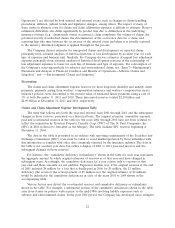 34
34 -
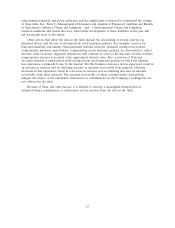 35
35 -
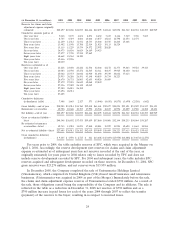 36
36 -
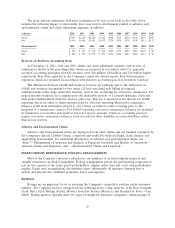 37
37 -
 38
38 -
 39
39 -
 40
40 -
 41
41 -
 42
42 -
 43
43 -
 44
44 -
 45
45 -
 46
46 -
 47
47 -
 48
48 -
 49
49 -
 50
50 -
 51
51 -
 52
52 -
 53
53 -
 54
54 -
 55
55 -
 56
56 -
 57
57 -
 58
58 -
 59
59 -
 60
60 -
 61
61 -
 62
62 -
 63
63 -
 64
64 -
 65
65 -
 66
66 -
 67
67 -
 68
68 -
 69
69 -
 70
70 -
 71
71 -
 72
72 -
 73
73 -
 74
74 -
 75
75 -
 76
76 -
 77
77 -
 78
78 -
 79
79 -
 80
80 -
 81
81 -
 82
82 -
 83
83 -
 84
84 -
 85
85 -
 86
86 -
 87
87 -
 88
88 -
 89
89 -
 90
90 -
 91
91 -
 92
92 -
 93
93 -
 94
94 -
 95
95 -
 96
96 -
 97
97 -
 98
98 -
 99
99 -
 100
100 -
 101
101 -
 102
102 -
 103
103 -
 104
104 -
 105
105 -
 106
106 -
 107
107 -
 108
108 -
 109
109 -
 110
110 -
 111
111 -
 112
112 -
 113
113 -
 114
114 -
 115
115 -
 116
116 -
 117
117 -
 118
118 -
 119
119 -
 120
120 -
 121
121 -
 122
122 -
 123
123 -
 124
124 -
 125
125 -
 126
126 -
 127
127 -
 128
128 -
 129
129 -
 130
130 -
 131
131 -
 132
132 -
 133
133 -
 134
134 -
 135
135 -
 136
136 -
 137
137 -
 138
138 -
 139
139 -
 140
140 -
 141
141 -
 142
142 -
 143
143 -
 144
144 -
 145
145 -
 146
146 -
 147
147 -
 148
148 -
 149
149 -
 150
150 -
 151
151 -
 152
152 -
 153
153 -
 154
154 -
 155
155 -
 156
156 -
 157
157 -
 158
158 -
 159
159 -
 160
160 -
 161
161 -
 162
162 -
 163
163 -
 164
164 -
 165
165 -
 166
166 -
 167
167 -
 168
168 -
 169
169 -
 170
170 -
 171
171 -
 172
172 -
 173
173 -
 174
174 -
 175
175 -
 176
176 -
 177
177 -
 178
178 -
 179
179 -
 180
180 -
 181
181 -
 182
182 -
 183
183 -
 184
184 -
 185
185 -
 186
186 -
 187
187 -
 188
188 -
 189
189 -
 190
190 -
 191
191 -
 192
192 -
 193
193 -
 194
194 -
 195
195 -
 196
196 -
 197
197 -
 198
198 -
 199
199 -
 200
200 -
 201
201 -
 202
202 -
 203
203 -
 204
204 -
 205
205 -
 206
206 -
 207
207 -
 208
208 -
 209
209 -
 210
210 -
 211
211 -
 212
212 -
 213
213 -
 214
214 -
 215
215 -
 216
216 -
 217
217 -
 218
218 -
 219
219 -
 220
220 -
 221
221 -
 222
222 -
 223
223 -
 224
224 -
 225
225 -
 226
226 -
 227
227 -
 228
228 -
 229
229 -
 230
230 -
 231
231 -
 232
232 -
 233
233 -
 234
234 -
 235
235 -
 236
236 -
 237
237 -
 238
238 -
 239
239 -
 240
240 -
 241
241 -
 242
242 -
 243
243 -
 244
244 -
 245
245 -
 246
246 -
 247
247 -
 248
248 -
 249
249 -
 250
250 -
 251
251 -
 252
252 -
 253
253 -
 254
254 -
 255
255 -
 256
256 -
 257
257 -
 258
258 -
 259
259 -
 260
260 -
 261
261 -
 262
262 -
 263
263 -
 264
264 -
 265
265 -
 266
266 -
 267
267 -
 268
268 -
 269
269 -
 270
270 -
 271
271 -
 272
272 -
 273
273 -
 274
274 -
 275
275 -
 276
276 -
 277
277 -
 278
278 -
 279
279 -
 280
280 -
 281
281 -
 282
282 -
 283
283 -
 284
284 -
 285
285 -
 286
286 -
 287
287 -
 288
288 -
 289
289 -
 290
290 -
 291
291 -
 292
292 -
 293
293
 |
 |
transactions for compliance with the company’s underwriting and pricing programs. All online business
is subject to consultative review by Personal Insurance’s in-house underwriters, and audits are
conducted by an internal peer review team across all of the Company’s independent agency-generated
business on a systematic sampling basis.
Insurers writing personal lines property and casualty policies may be unable to increase prices until
some time after the costs associated with coverage have increased, primarily because of state insurance
rate regulation. The pace at which an insurer can change rates in response to increased costs depends,
in part, on whether the applicable state law requires prior approval of rate increases or notification to
the regulator either before or after a rate change is imposed. In states with prior approval laws, rates
must be approved by the regulator before being used by the insurer. In states having ‘‘file-and-use’’
laws, the insurer must file rate changes with the regulator, but does not need to wait for approval
before using the new rates. A ‘‘use-and-file’’ law requires an insurer to file rates within a period of time
after the insurer begins using the new rate. Approximately one-half of the states require prior approval
of most rate changes. The Company’s ability or willingness to raise prices, modify underwriting terms or
reduce exposure to certain geographies may be limited due to considerations of public policy, the
evolving political environment, changes in the general economic climate and/or social responsibilities.
The Company also may choose to write business it might not otherwise write for strategic purposes,
such as improving access to other underwriting opportunities.
Product Lines
The primary coverages in Personal Insurance are personal automobile and homeowners and other
insurance sold to individuals. Personal Insurance had approximately 7.8 million active policies
(e.g., policies-in-force) at December 31, 2011.
The Personal Insurance segment writes the following types of coverages:
•Personal Automobile provides coverage for liability to others for both bodily injury and property
damage, uninsured motorist protection, and for physical damage to an insured’s own vehicle
from collision. In addition, many states require policies to provide first-party personal injury
protection, frequently referred to as no-fault coverage.
•Homeowners and Other provides protection against losses to dwellings and contents from a
variety of perils (excluding flooding) as well as coverage for personal liability. The Company
writes homeowners insurance for dwellings, condominiums and tenants, and rental properties.
The Company writes coverage for boats and yachts and valuable personal items such as jewelry,
and also writes coverages for umbrella liability, identity fraud, and weddings and special events.
Net Retention Policy
The following discussion reflects the Company’s retention policy with respect to the Personal
Insurance segment as of January 1, 2012. The Company generally retains its primary personal auto
exposures in their entirety. For personal property insurance, there is an $8.0 million maximum retention
per risk. Personal Insurance retains the first $10.0 million of umbrella policies and purchases facultative
reinsurance for limits over $10.0 million. The Company utilizes facultative reinsurance to provide
additional limits capacity or to reduce retentions on an individual risk basis. The Company may also
retain amounts greater than those described herein based upon the individual characteristics of the risk.
15
